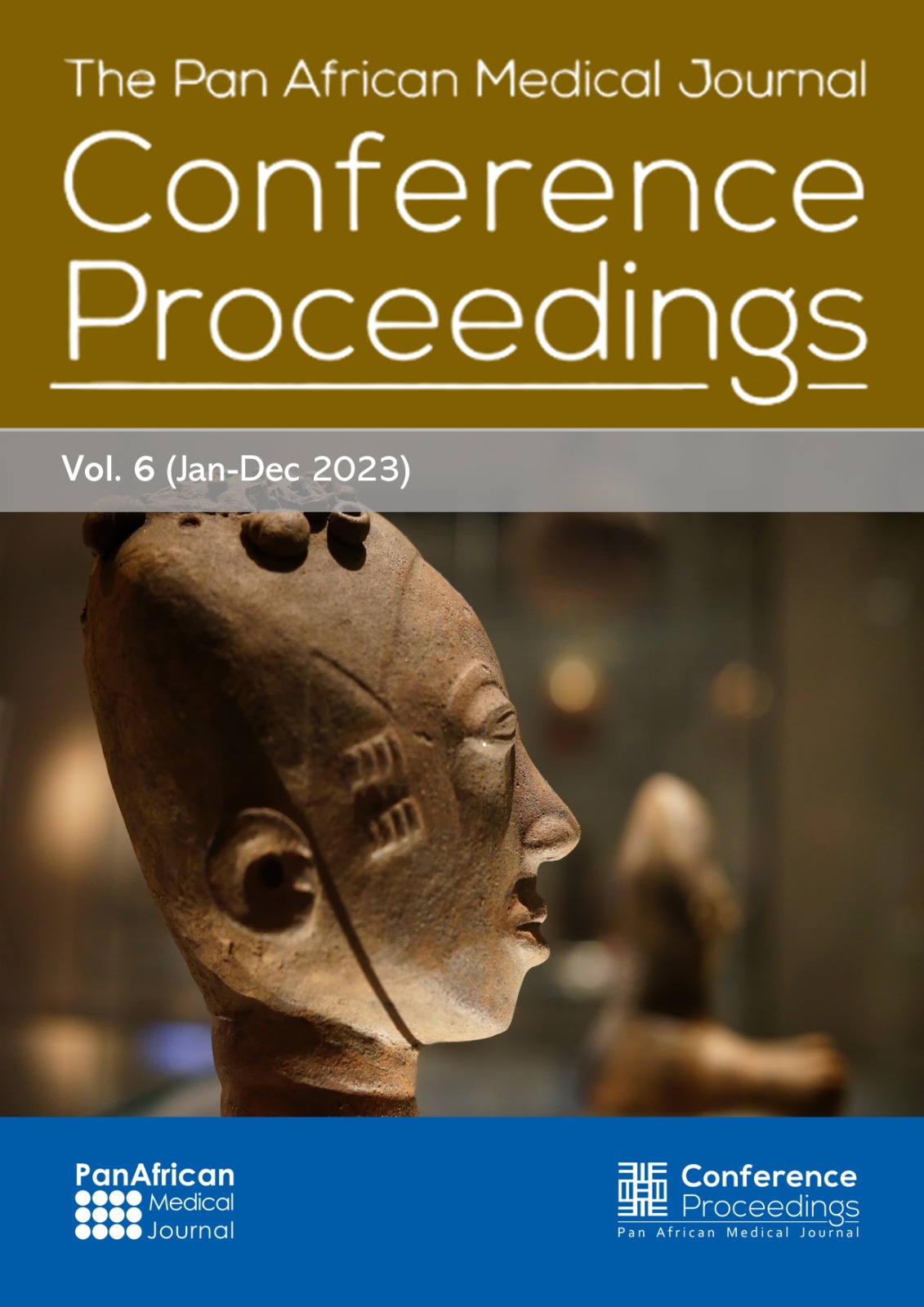Conference abstract
Correlates of socio-demographic and environmental characteristics of HIV/AIDS affected households in South-western Nigerian local communities
Pan African Medical Journal - Conference Proceedings. 2022:13(13).03
Feb 2022.
doi: 10.11604/pamj-cp.2022.13.13.873
Archived on: 03 Feb 2022
Contact the corresponding author
Keywords: Environmental characteristics, HIV/AIDS, sociodemographic factors, traditional zones
Oral presentation
Correlates of socio-demographic and environmental characteristics of HIV/AIDS affected households in South-western Nigerian local communities
Michael Adewole Adedigba1,&, Ayorinde Albert Abegunde2, Eyitope Ogunbodede1, Ibiyemi Fakande3
1Department of Preventive & Community Dentistry, Obafemi Awolowo University, Ile-Ife, Nigeria, 2Urban & Regional Planning, Obafemi Awolowo University, Ile-Ife, Nigeria, 3Living Hope Care, Ilesa, Nigeria
&Corresponding author
Introduction: the aim of this study was to determine the socio-demographic and environmental characteristics of HIV/AIDS affecting households in South-western Nigerian local communities.
Methods: a survey (n = 297) based on ex-post-facto technique, employed both primary and secondary data to collect data and appraised socio-demographic and environmental characteristics of HIV/AIDS affected households in the traditional core, post traditional and contemporary zones that represented high, medium and low residential densities in Ilesa region, Nigeria. Low educated young aged adult female patients who earned below $2.99 daily dominated the study. Most of them were living in the traditional core zone where households co-habited and shared facilities in joint apartments.
Results: level of rape was reported to be higher in this zone than others. In the post traditional zone, patients’ ages had positive and negative relationships with their housing designs and house densities respectively. Education of the patients had negative relationship with the nature of their sleeping rooms and house density in the contemporary zone accordingly while the level of their wealth status positively correlated with the latter.
Conclusion: with general low levels of education and wealth, poor housing design and HIV/AIDS incidence across residential zones, policies on HIV/AIDS in the country must indiscriminately cut across all her local communities and be supported by her health-environment related professionals.
Correlates of socio-demographic and environmental characteristics of HIV/AIDS affected households in South-western Nigerian local communities
Michael Adewole Adedigba1,&, Ayorinde Albert Abegunde2, Eyitope Ogunbodede1, Ibiyemi Fakande3
1Department of Preventive & Community Dentistry, Obafemi Awolowo University, Ile-Ife, Nigeria, 2Urban & Regional Planning, Obafemi Awolowo University, Ile-Ife, Nigeria, 3Living Hope Care, Ilesa, Nigeria
&Corresponding author
Introduction: the aim of this study was to determine the socio-demographic and environmental characteristics of HIV/AIDS affecting households in South-western Nigerian local communities.
Methods: a survey (n = 297) based on ex-post-facto technique, employed both primary and secondary data to collect data and appraised socio-demographic and environmental characteristics of HIV/AIDS affected households in the traditional core, post traditional and contemporary zones that represented high, medium and low residential densities in Ilesa region, Nigeria. Low educated young aged adult female patients who earned below $2.99 daily dominated the study. Most of them were living in the traditional core zone where households co-habited and shared facilities in joint apartments.
Results: level of rape was reported to be higher in this zone than others. In the post traditional zone, patients’ ages had positive and negative relationships with their housing designs and house densities respectively. Education of the patients had negative relationship with the nature of their sleeping rooms and house density in the contemporary zone accordingly while the level of their wealth status positively correlated with the latter.
Conclusion: with general low levels of education and wealth, poor housing design and HIV/AIDS incidence across residential zones, policies on HIV/AIDS in the country must indiscriminately cut across all her local communities and be supported by her health-environment related professionals.








